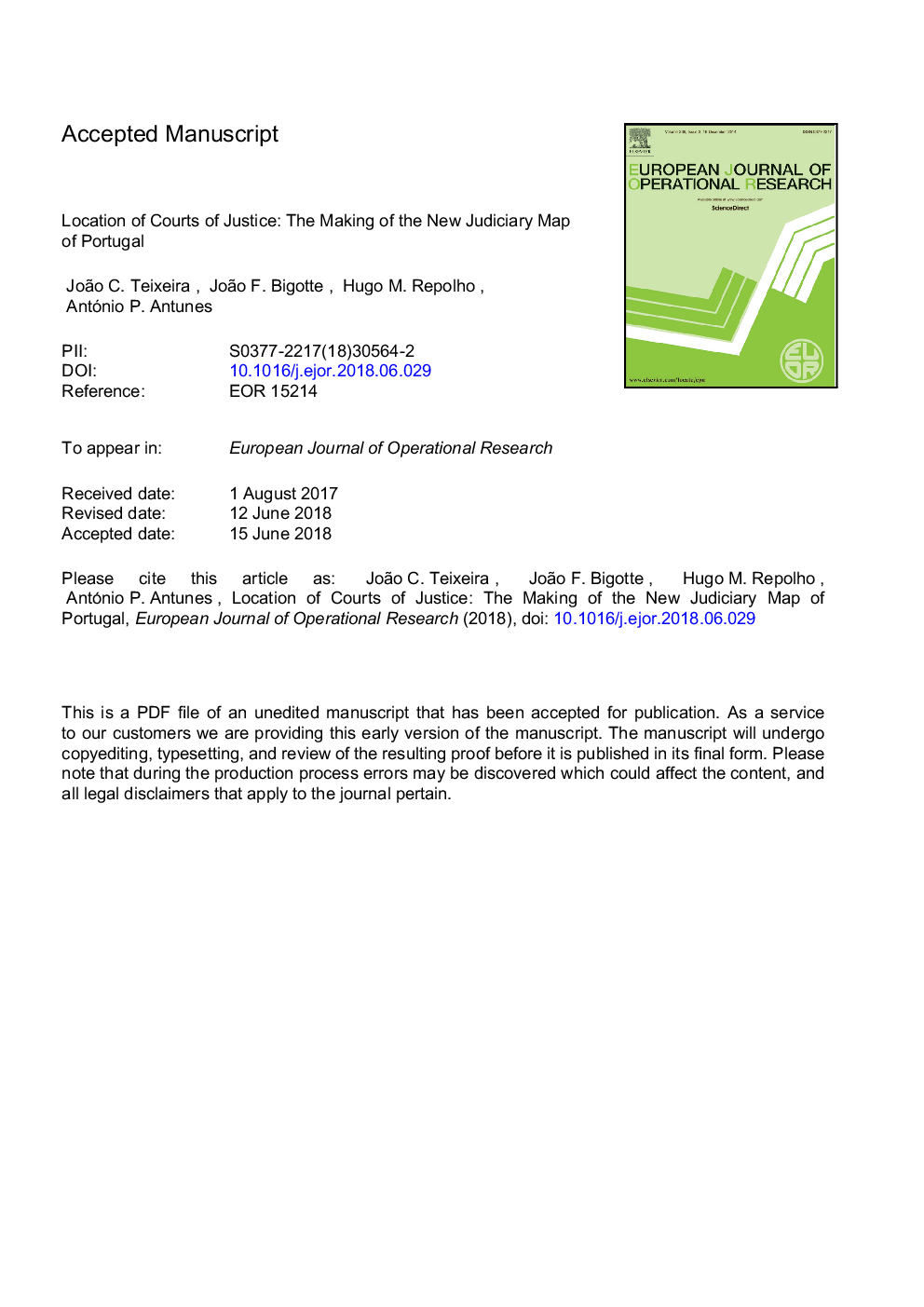| Article ID | Journal | Published Year | Pages | File Type |
|---|---|---|---|---|
| 10225909 | European Journal of Operational Research | 2019 | 34 Pages |
Abstract
Location modeling techniques have been applied to an extremely wide variety of public facilities. However, their application to one of the most ubiquitous public facilities - courts of justice - has been very rare. In this paper, we describe a study promoted by the Ministry of Justice of Portugal to define a proposal for the country's new judiciary map - that is, the spatial organization of the judicial system. The new map aims to promote the efficiency and specialization of the justice system (leading to better and faster court decisions) and to provide a good level of accessibility to courts. We developed two optimization models addressing those goals - a districting model, to determine the borders of new, large judicial districts; and a court location model, to determine the location, type, size, and coverage area of the courts included in each new district. Both models are discrete facility location models and consider hierarchical facilities - generic courts and specialized courts of multiple types. Our study was publicly acknowledged by the Portuguese government as having contributed to the new judiciary map that has since been approved and implemented.
Related Topics
Physical Sciences and Engineering
Computer Science
Computer Science (General)
Authors
João C. Teixeira, João F. Bigotte, Hugo M. Repolho, António P. Antunes,
